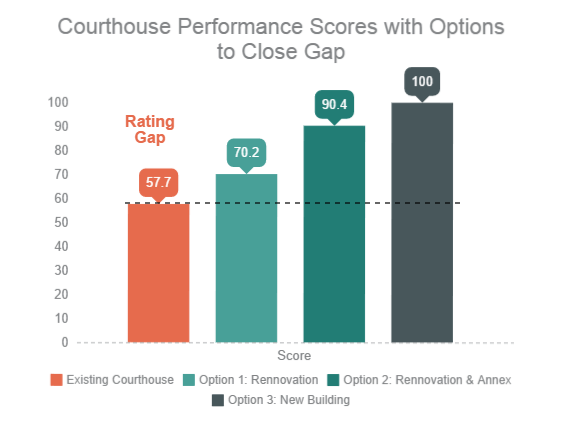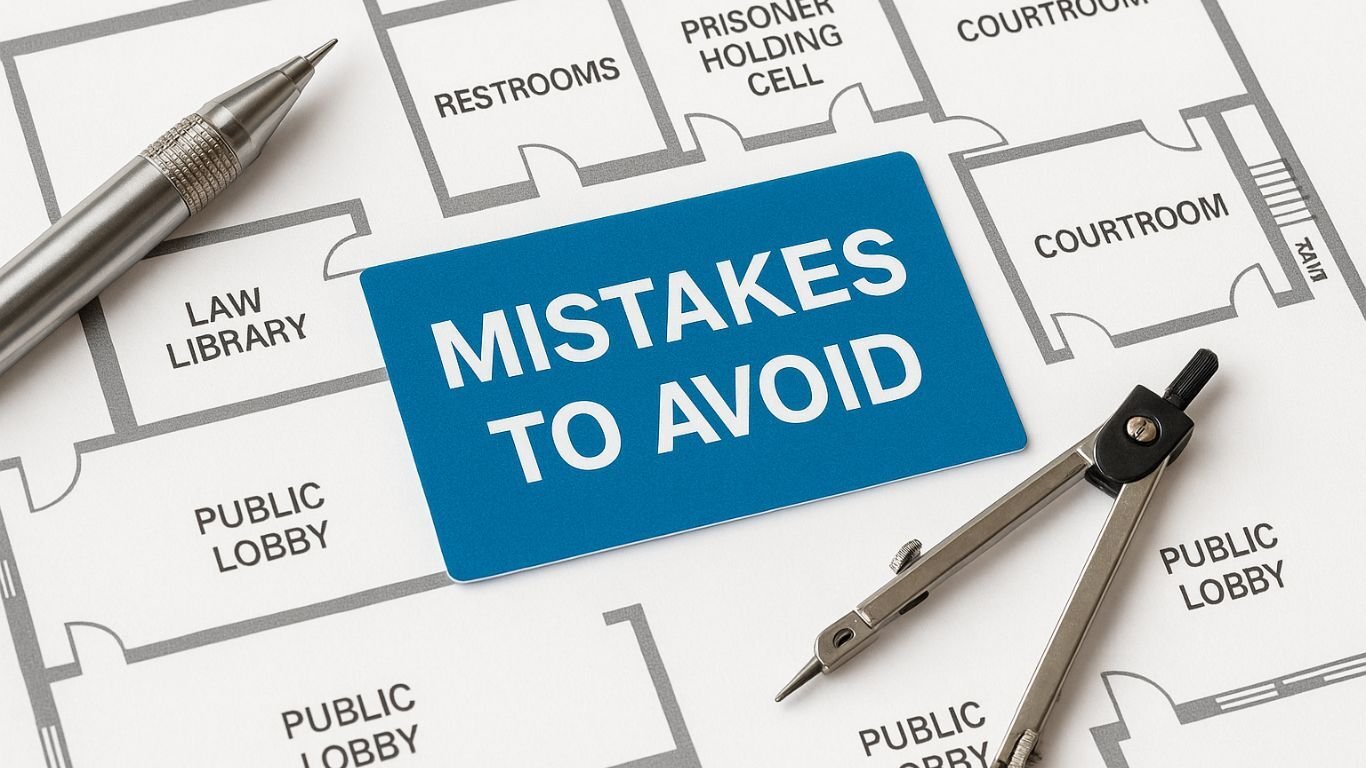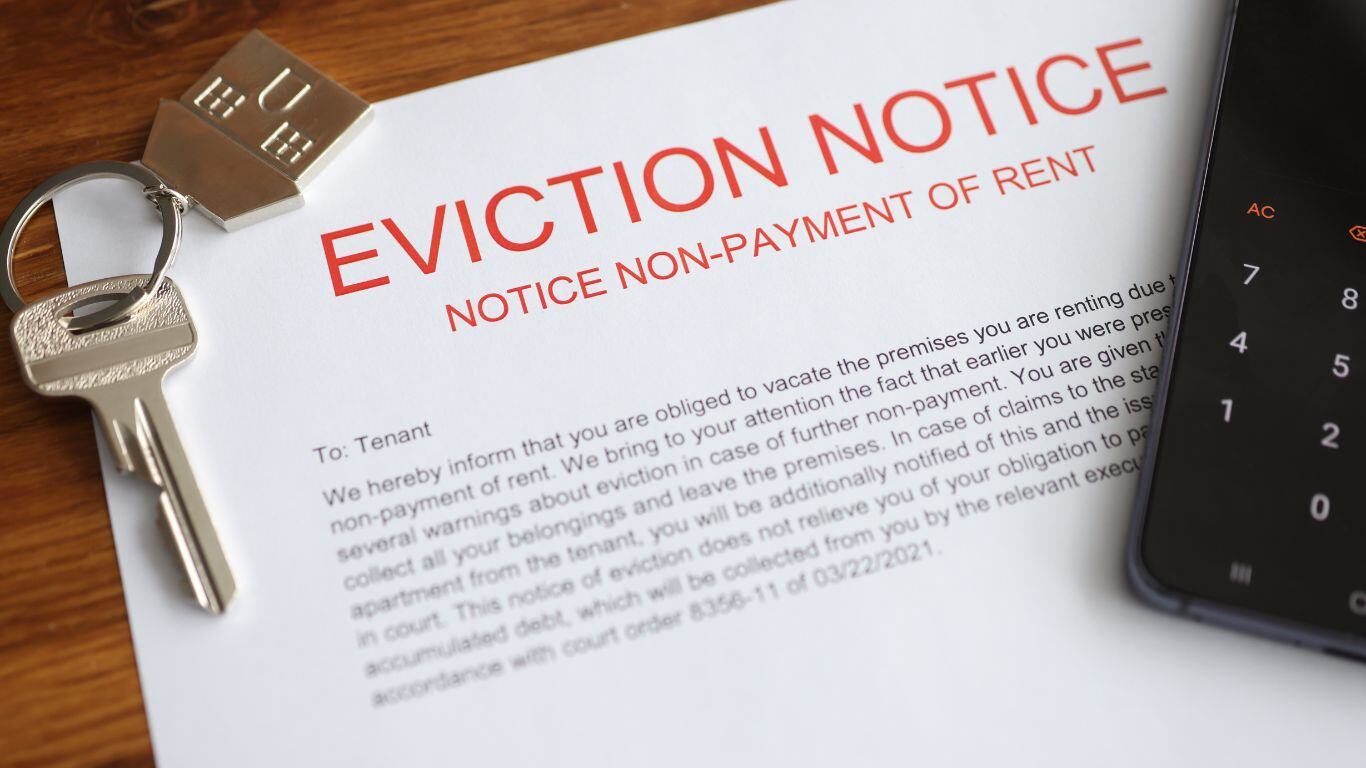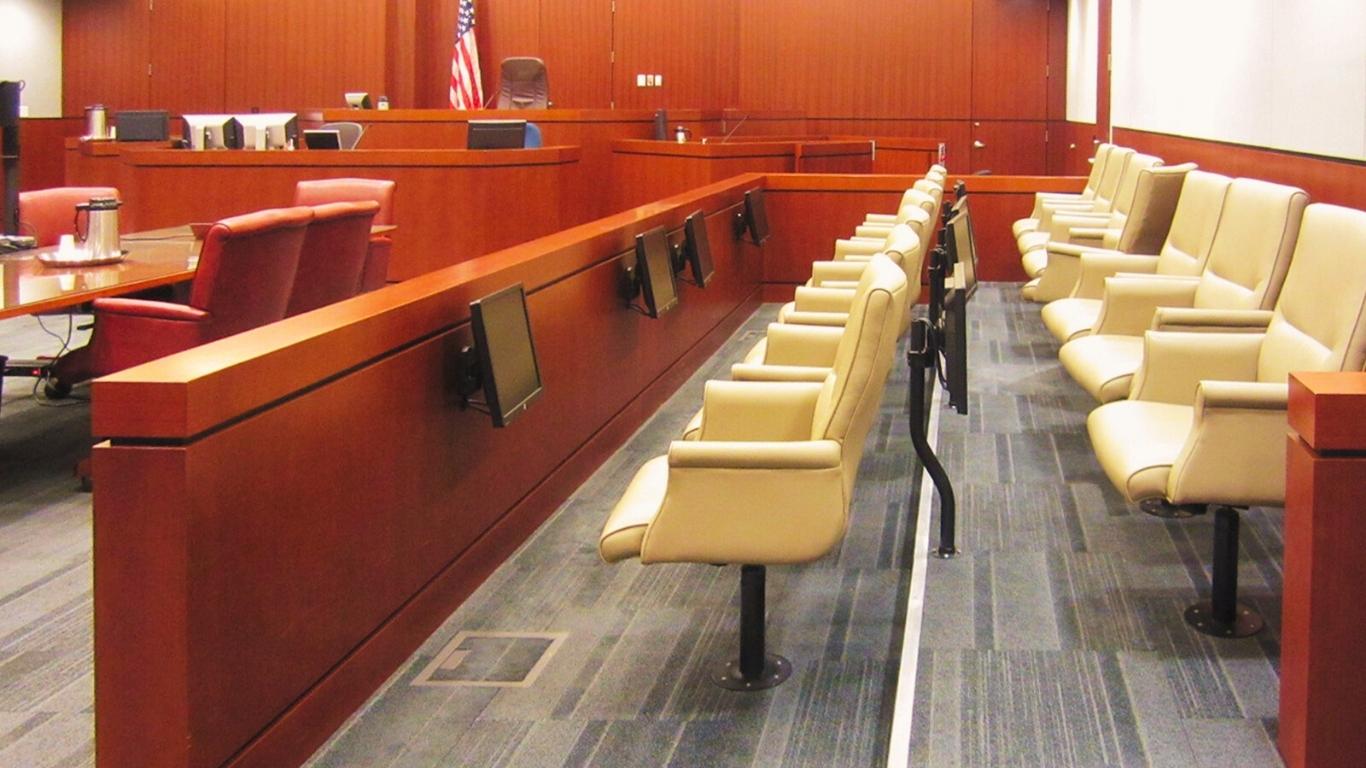When discussing courthouse metrics, the higher the rating score, the better the existing facility meets the operational needs of the court. An overall rating score of 100 represents an ideal courthouse, 80-100 is a well-functioning courthouse, and below 60 is a courthouse with significant challenges. The difference between the actual score and 100 is the gap. In this final entry in the courthouse performance metrics series, I’ll address how we can use these metrics to score various alternatives to fill the gap in courthouse planning.
The scores provided by this objective quantitative analysis may be used to focus on corrective measures that will directly resolve courthouse performance deficiencies. Additionally, multiple options for corrective measures may be planned and then individually scored using identical rating criteria to determine which option best closes the gap.
Sample historic courthouse that scored 57.7 out of 100
Courthouse Performance Gap Example
A perfect example is a historic courthouse that we assessed and developed a range of renovation and new construction alternatives for the court to correct existing deficiencies.
The overall rating score for the courthouse was 57.7. Thus, this courthouse had significant deficiencies, and we considered multiple options for closing the gap between the score of 57.7 and an ideal score of 100.
Option 1:
The first option proposed was a renovation project of the existing courthouse. In a renovation project, you accept the constraints of the existing facility (especially historic facilities), acknowledging that it is rarely possible to achieve an ideal score. However, a renovation project can close the gap and improve the court's operations.
We found that by proposing projects to improve court functionality, security, space standards, building conditions, and technology, the score of the existing facility could increase from 57.7 to 70.2. Regarding letter grades, a courthouse with enough deficiencies to score an “F” could be improved to a “C,” or average courthouse. This significantly reduces the gap between the existing score and the ideal but only leaves an average-performing courthouse.
Option 2:
The second option proposed utilized the existing courthouse and an adjacent annex to accommodate future expansion and facility improvements. If Option 2 were implemented, the resulting overall rating score for the courthouse performance would be 90.4. This score represents an even more significant reduction in the gap between the existing and ideal scores.
Option 3:
The third option proposed was an entirely new courthouse structure. If implemented, it is assumed that the resulting overall rating score for the courthouse would be an ideal 100.0.
The following graph depicts these relative scores and the gap between the existing courthouse, each option, and the ideal courthouse.
 The example in this post illustrates how courthouse performance measures can be used to compare alternatives. We have found them to be powerful measures to assess an existing facility, potential alternatives, designs in progress, and post-occupancy to ensure the court receives the proper operational performance from the courthouse.
The example in this post illustrates how courthouse performance measures can be used to compare alternatives. We have found them to be powerful measures to assess an existing facility, potential alternatives, designs in progress, and post-occupancy to ensure the court receives the proper operational performance from the courthouse.
We call these performance measures the “benefit" part of a more rigorous equation that considers the cost of each alternative and the risk of taking no action. Through such an analysis, the court can have more confidence in which option to select to yield the most significant operational improvement for the most reasonable cost.
In conclusion, a thorough, quantitative analysis of a courthouse provides the most efficient way to assess a facility’s current condition and the most effective way to “close the gap” between the existing facility and the ideal courthouse.




















